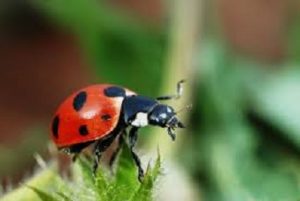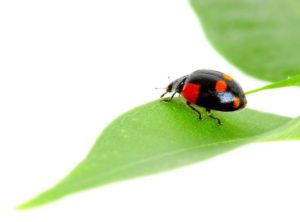
Lady Beetles, often called lady bugs, are not considered true bugs or insects. They include more than 5,000 species worldwide, with more than 450 native to North America. They are about a quarter of an inch long, are oval or dome-shaped and are usually yellow, orange, or scarlet with small black spots on their wing covers. Their legs, head and antennae are black.
There is a myth about lady bugs that says the spots on their backs indicate their age. Actually, the size and shape of the spots indicate the species of the beetle. They are also a topic of a popular nursery rhymes. Ladybird, Ladybird.
They are drawn to home vegetable gardens in search of food, primarily soft-bodied insects such as aphids and scale. These voracious eaters are anything but ladylike. Planting angelica or scented geraniums might also help attract Lady bugs to your garden.
Aphids and scale are harmful to ornamental and vegetable crops, and lady bugs are a natural way of controlling these pests. In fact, the lady bug most frequently seen in American gardens is the multicolored Asian lady beetle, Harmonia axyridis, which was introduced by USDA Agricultural Research scientists in the late 1970s and early 1980s as a biological control agent for soft-bodied insects. You can actually purchase lady bugs if you like.
The only need to control lady bugs is when they enter your house, where the walls mimic the vertical cliffs where they overwinter in their home countries. The best way to keep them outdoors is to seal cracks and crevices and to make sure that doors, windows and screens have a tight seal. They want harm you or your family but can become a nuisance.
We at Southern Pest Control hope that you enjoyed this information. We have been serving this Mississippi Gulf Coast area for over 35 years. All members of our staff are professionals and have received the needed training to safely rid your home and office of unwanted pests.
Please call us at 800 527-9832 when a pest control or termite issue arises.

